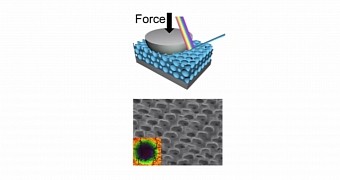Usually, people with head injuries can end up suffering from short-time memory loss, loss of consciousness or even brain swells that may lead to cancer and death. Head injuries are no light matter.
To help medics identify head wounds faster after a collision, researchers at University of Pennsylvania managed to build helmets that change color when somebody's hurt. They created a polymer that will change color depending on the amount of force your helmet was hit with, giving people around the victim an idea if he has suffered a head trauma or not.
According to Phys.org, to build this color-changing helmet, researchers used holographic lithography that creates photonic crystals whose structure changes color when they get deformed. They are perfect to be used on present-day helmets without any power to work, and they won't encumber the wearer in any way as they are sufficiently light.
Another issue in developing these sorts of crystals was their manufacturing costs. Although, normally, they weren't the cheapest thing to manufacture, recent molding techniques managed to drop the price lower than usual, making them more affordable for mass-produced headgear.
This discovery means that every time a hockey, football or any gear-based sportsman is injured, medics and other people could react much more adequately to his injury instead of conducting extra inquiries on the wound that would prove in the end fatal for the injured player.

 14 DAY TRIAL //
14 DAY TRIAL // 